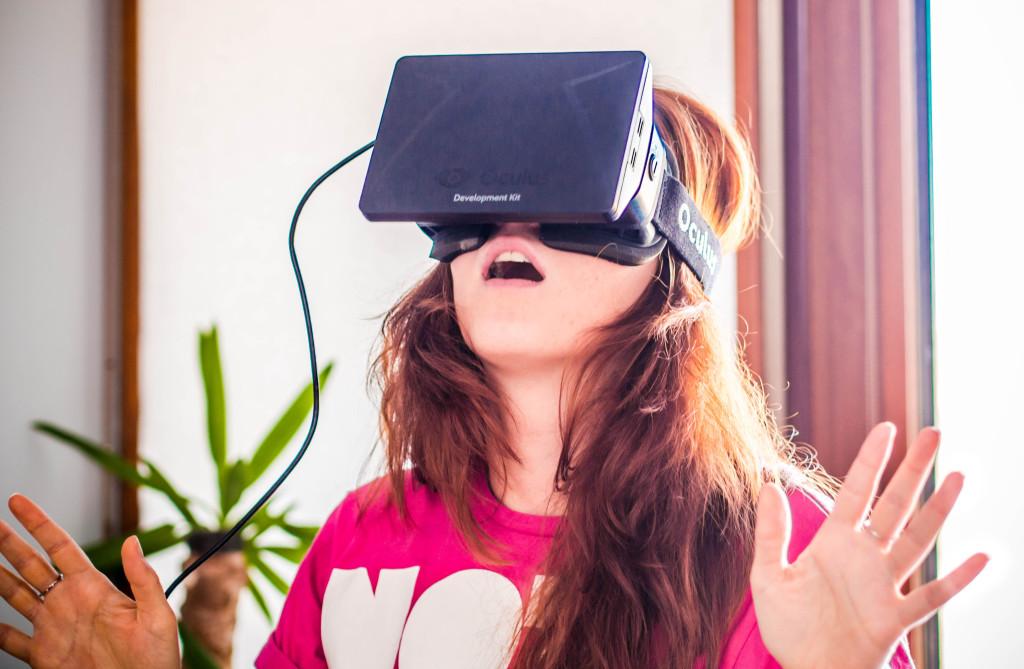I was in the Rift
My experience trying out the Oculus Rift at Graded
A few weeks ago, video game journalist Lorin Baumgarten came to Graded to talk about narrative in video games, and how a good story impacts gameplay. But that’s not the only thing he had in store. At 3:10, about 20 high school students were eagerly awaiting Mr. Baumgarden at the MakerSpace, buzzing with excitement—we already knew what was going to happen, as it had announced at the assembly, but we just couldn’t wait. A few minutes later, Mr. Baumgarten entered, and without further ado, presented to us the Oculus Rift.
Now, if that name does not ring a bell, it is a new virtual reality video game hardware work and shaped like ski goggles with a tablet in front, made by Oculus VR. The creation of the Rift, as it’s commonly called, was primarily funded via Kickstarter, an online funding website, and those who had backed a certain amount of money received a tester’s copy—much like Mr. Baumgarten, who had brought his to Graded for the students to try out. He briefly explained to everyone present what exactly we were getting into and proceeded to connect the odd goggles to a computer, which in turn was connected to a television—this was for those who weren’t “in the Rift” to be able to see what the user was seeing—though without the 3D effect.
Mr. Baumgarden proceeded to explain exactly how it worked: the tablet had a series of sensors, which allowed the Oculus Rift to detect movement in order to process the image around you, with the 3-dimensional effect created by simply duplicating the image. There were two softwares available for us to test, “Movie Theater” and “Blue Marble,” and the first students who had the chance to put on the device witnessed the former. The title is self-explanatory: the user is in a movie theater watching the 3D version of Ang Lee’s The Life of Pi. But there’s more to it. Not only was the movie in 3D, so was the theater. I’m not kidding; look to either side and you would see rows and rows of empty chairs, look behind you and you could see the light coming from the projector cabin. You could even be teleported to other chairs with only a click from Mr. Baumgarten, and depending on where you were seated you would get a different view—much like a real movie theater—though you would actually have to lift your head to see the 30-or-so-feet-tall screen if you were sitting near the front.
I didn’t try out the “Movie Theater” software, however, and took the time to ask a few questions about the Rift while the first few were testing it out. Mr. Baumgarten compared the possible future of the Oculus Rift to the setting of Ernest Cline’s famous speculative fiction novel, Ready Player One, a world where anything and everything is possible and controlled by virtual reality. He said that the use of virtual reality for advertisement is inevitable, giving an example of choosing a car from a retailer: “you’d be able to choose the color, test drive the car, without even having to leave your house.”
When asked if the Rift would be used as an add-on to an existing next-generation console such as the PlayStation 4, Baumgarten said no. However, already as early as June 2012, after the E3 conference, Valve (producers of such video game masterpieces like Portal and Half-Life) expressed interest in not only making brand new software but also adapting their classics for Rift use. Not only that, but additional software such as “VorpX” can already adapt games such as Skyrim and BioShock Infinite for the rift as well, though they aren’t as functional. According to Mr. Baumgarten, who had tried out the Skyrim demo, the gameplay is especially confusing during first-person cutscenes – since the camera tends to move on its own during those, it leaves the player confused as to where he’s looking at, since you have to actually move your head to see things with the rift. Narrative, therefore, would have to be completely reconstructed: either you’re fully in control of the story, or you’re merely observing the story from all angles as it happens around you.
After this conversation about the future of gaming via the Rift, it was my turn to test it out, this time with “Blue Marble.” The software starts off with a scrolling menu; by looking down, you would be able to scroll through songs which would play during the demo and focusing on “launch” made the program, well, launch. The screen faded to black, and when it lit up I found myself in a modern space pod. The air-locked door to the pod opened, the song started, and there I was staring at the Earth. To my left, the moon; to my right, the sun; all around me was the vast expanse of the universe, comets, stars, and nebulas. A few seconds in and a satellite went floating over my head as I circled the Earth, slowly escaping its atmosphere.
Using the Oculus Rift, even if only for four minutes, was absolutely incredible. I really did feel like I was somewhere else—a place that I was in for so little, yet miss so much. Here’s to waiting five years for the actual release.

If you asked Felipe Marques about comics, video games, movies, or any combination of those, he would write several extensive articles about the stuff -...











